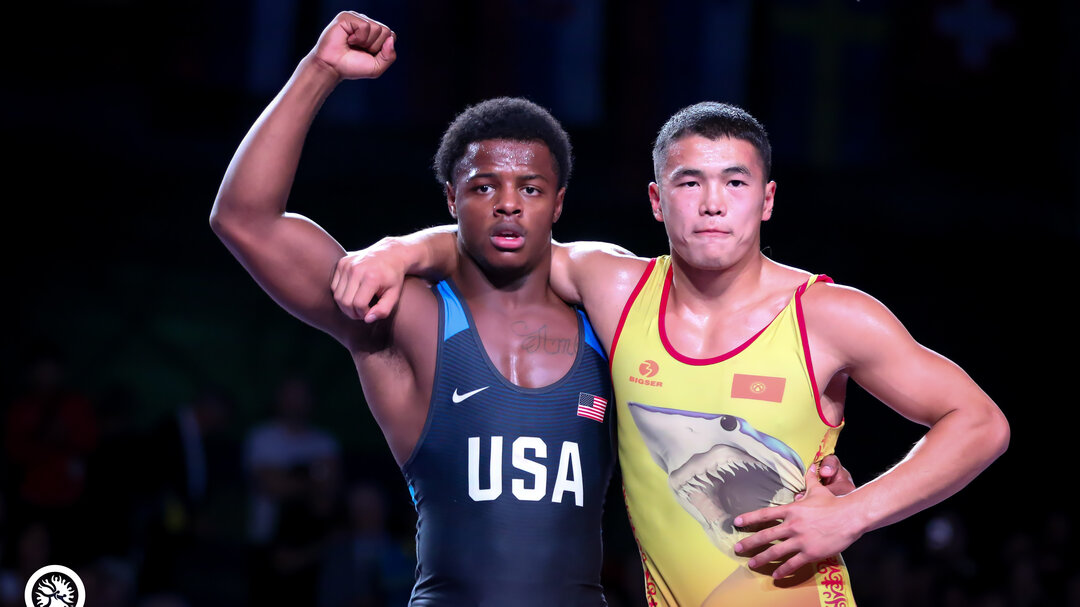Bey Likes Odds to Repeat as World Champion
Sunday, September 16, 2018 - 21:32 By Eric Olanowski

TRNAVA, Slovakia (September 16) – For reigning world champion Kamal BEY (USA) to replicate his 2017 run to Junior World gold, he’ll have to navigate a bracket that returns every medalist from the 74kg Tampere World Championships.
Bey, along with runner-up Akzhol MAKHMUDOV (KGZ) and bronze medalist Nasir HASANOV (AZE) drew into the bottom half of the bracket, while Sajan SAJAN (IND), the other bronze medalist, drew into the top half of the bracket.
The way the draw played out, a potential Tampere World finals rematch between Bey and Makhmudov could happen as early as Monday night (18:00 local time).
 df. Akzhol MAKHMUDOV (KGZ) by VPO1, 16-11 _.jpg)
Kamal BEY (USA) and Akzhol MAKHMUDOV (KGZ) after the 2017 74kg gold-medal bout at the Tampere World Championships. (Photo by Marion Stein)
When Bey was asked about the potential semifinal challenge of facing Makhmudov again, he said “It’s not that much of a challenge. People always want to challenge me, and I accept that challenge. He’s only bumping up for this tournament; then he’s going back down to 72kg for the Senior World Championships. …I’m in this for the long haul, and he’s just in this for one match.”
He added, “This year, it’ll be about keeping the same pace and mentality, while not giving up as many points.”
Whether it’s Makhudov, Hasanov, Sajan or the field, Bey feels that the improvements he's made over the last year have put himself in position to beat anyone on his way to repeating as Junior World champion.
“Being a World champion is never given. Whoever stands in your way, you have to beat them regardless. It just about me going out there and taking care of my business.”
Bey, along with the other returning medalists kick off the opening round of the 2018 Junior World Championships on Monday morning at 10:30 AM (local time).


Share your thoughts.
Comments